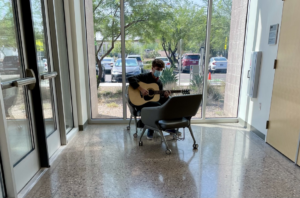Formative Assessment: Progress, Barriers and Opportunity

With the shift to digital learning, formative assessment is a hot topic and a big opportunity to improve student learning. Rather than being paper-based scheduled checks of learning featuring multiple choice questions, online assessments are often embedded in learning experiences and provide continuous feedback. As noted last week, the explosion of data that comes with the shift to digital doesn’t seem to be fully appreciated by policy advocates on either side of education debates.
In the last decade, districts (especially big urbans) created aligned instruction systems with shared lessons, pacing guides, and benchmark assessments that marked progress toward year end summative assessments. While this combination of formative and summative assessment added a lot of information it also increased the amount time devoted to imposed assessments of learning.
Mobile traffic took off in 2010 when tablets hit the market and mobile app use exploded. The use of online diagnostic and adaptive assessments spread rapidly; and some networks implemented performance assessments. Devices plummeted in cost and, as reported in Keeping Pace, by 2013 most districts were beginning to incorporate online and blending learning strategies. Many of the 200,000 Apple and Android learning apps provide performance feedback to students.
It’s worth noting that a few school networks, most notably Expeditionary Learning and New Tech Network, have retained a two decade focus on performance assessment and a curriculum made up of big projects with lots of writing. With more focus on writing in new standards, there is renewed interest in performance assessment.
Progress. The best product development work in formative assessment has been progress in products that combine adaptive assessment with targeted tutoring. The K-12 assessment in i-Ready from Curriculum Associates comes with K-8 instructional units in math and reading. Dreambox Learning covers K-8 math.
McGraw’s formative system Acuity was updated to include 400 performance tasks (and should soon work more seamlessly with recently purchased Engrade).
As noted last month, MasteryConnect turned the corner from viral app to classroom gamechanger. They make assessment tools that allow teachers to quickly assess student progress and share those quizzes with other teachers. MasteryConnect recently extended their reach by acquiring competitor Socrative.
In August, leading social learning platform Edmodo launched Snapshot, a formative assessment system. Last week they launched free Common Core resource recommendations. Likewise, open resource catalog OpenEd launched an formative assessment system.
Literacy Design Collaborative is an open set of resources for writing-across-the-curriculum that encourages more writing and improves the quality of writing assessment.
Lightside Labs, acquired by Turnitin this week, joins half a dozen essay feedback and scoring systems but will likely deliver a lower price point and better learner experience.
Barriers. With the shift from print to digital, students receive hundreds of pieces of feedback from the thousands of keystrokes that make up their digital day. The problem is that, other than proprietary walled gardens, none of that feedback is collected consistently and presented in a unified manner.
This spring we cataloged formative assessment products with a focus on those that were more authentic and open ended. While we noted progress in next gen gradebooks, it was disappointing to find that most teachers still use spreadsheets to manually enter and track formative assessment data. We spotted four problems:
- Different standards
- No common tagging scheme for content and assessment
- No agreement on competency
- Inadequate tools
Here’s a common response from an education software provider, “We definitely want to support better information for teachers and explore ways to integrate more closely with the gradebooks.” However, there’s a lot of waiting around for someone else to solve this problem. The tools won’t get better until there is more philanthropic investment in tagging schemes and/or more aggregated demand (i.e., more schools doing things the same way) that drives investment.
Digital learning and the explosion of formative data means the beginning of the end of week long state tests. By using thousands of formative observations it will be increasingly easy to accurately track individual student learning progressions. But making better use of the explosion of formative data will require leadership and investment.
This is an education problem more than a technology problem. It would help if school networks (e.g., League of Innovative Schools, Great Schools Partnership, New Tech Network, etc) agreed on competency-based protocols and used their market leverage to drive investment to solutions.
For more on formative assessment, see:
- How Formative Assessment Supports Writing to Learn
- What is Performance Assessment?
- Knowing The Score: Actionable Assessment from Student Writing
Curriculum Associates, DreamBox and Literacy Design Collaborative are Getting Smart Advocacy Partners. Edmodo is a Learn Capital portfolio company where Tom Vander Ark is a partner.








Leslie Wilson
Tom, this is incredibly helpful information. Greatly appreciate the work and agree with your recommendations. There is hope for releasing us from being high stakes test driven. The solution lies in here.